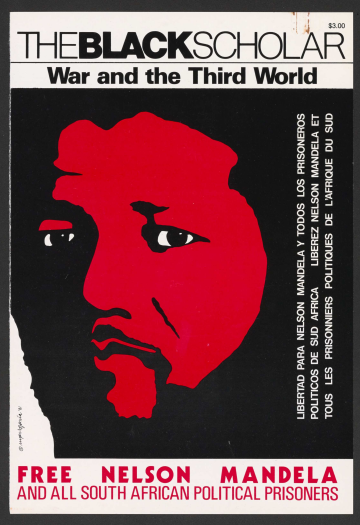Author: pburnett
Remembering a First Response to the Epidemic on World AIDS Day
In 1988, the World Health Organization established World AIDS Day, one of eight major global health campaigns begun by the United Nations. It stands today as a reminder that, after forty years, tens of millions of people have died of HIV/AIDS, and approximately 37 million are currently living with the disease. It also should remind us of how terrifying this disease is, how it hurts those the most who have the fewest resources with which to defend themselves, and how we are nowhere near an end to the spread of HIV and the suffering it causes.
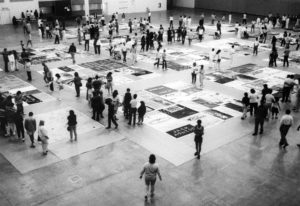
Last year, the Oral History Center released a 7-episode podcast about the first efforts to understand, track, and treat a mysterious new illness that was killing gay men in San Francisco. Based on the three dozen interviews conducted by Center historian Sally Smith Hughes, First Response: AIDS and Community in San Francisco highlights both the larger context of the arrival of the epidemic and the on-the-ground drama of the physicians, nurses, epidemiologists, and laboratory researchers who were fighting for scarce resources while also fighting the disease.
For decades now, HIV/AIDS has been evolving into different disease, as it spread around the world into new social, economic, technological, and cultural contexts. By 2010, new infections in the United States were three times as likely to be among African American and Latino populations as among white men, for example.
There is therefore a lot of work for us to do at the Oral History Center to map the past thirty years of the epidemic. Sadly, however, many of the themes of First Response are still relevant today: the stigmatization of the disease, a reluctance to pay for the public-health and primary-care interventions necessary to check the spread of HIV, and our general struggle to address the larger context in which survivors of HIV find themselves. For now, we will be working with partners to develop curriculum content for Grade 11 classrooms across the country around the First Response podcast and our collection of interviews. If you would like to help with this work developing assignments and content for educators, please contact Paul Burnett at pburnett@berkeley.edu.
New Release Oral History: George Miller
George Miller: ‘Gamos’ and Other Tales from Sam’s Grill
by Martin Meeker, Charles B. Faulhaber Director of the Oral History Center
The title of this particular oral history reveals not only something about its content, it provides some hint about the circumstances of the interview itself. In this transcript, you’ll see the usual Oral History Center (OHC) template of question followed by answer and so forth, but befitting the setting of the interview — San Francisco’s historic Sam’s Grill — this exchange was more a wide-ranging conversation. It turns out that George Miller, our featured narrator here, doesn’t much like the spotlight. Although he has many accomplishes to boast, he would prefer to talk ideas and give space to those things that he finds important, interesting, confounding, and amusing.
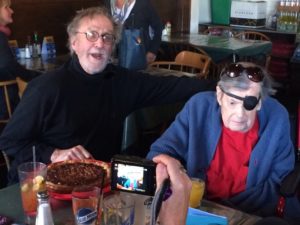
You will learn in this interview that George Miller first came to know the Oral History Center in the course of serving as a volunteer archivist, processing collections in our home, The Bancroft Library. Surrounding himself with many other very interesting and accomplished individuals, Miller asked the then OHC director if we might like to do an oral history with Thomas Graff, a man who was deeply active in environmental politics and a leader of the Environmental Defense Fund. It was agreed that Graff was a very worthy subject and Miller generously sponsored the interview. Over the following decade, Miller nominated — and underwrote — many more oral histories, thus helping OHC maintain its operations while also contributing to expansion of the oral history collection at Berkeley. As of 2019, the list includes: Jake Warner, Rick Laubscher, Will Travis, Joe Bodovitz, Anne Halsted, Michael Teitz, Jim Chappell, John Briscoe (in 2020), and, last but not least, a forty-hour interview with Warren Hinckle. As the interviewer for the Bodovitz and Travis interviews, I first met Miller around 2014. I recall an informal tipple at the Faculty Club cocktail lounge when I think I finally pieced it together: 1. He was not George Miller, the congressman; 2. Despite his rather informal façade, he is a very serious thinker; and 3. That plaque above a urinal in the men’s restroom at the club? It honored none other than George Miller, our partner in these interviews.
After engaging with Miller over the years, I suggested that he should sit for an oral history interview himself. This suggestion, and the many that followed, were rebuffed with silence. As time went on, however, I began better to grasp the necessity of conducting his oral history, despite the refusal of the potential narrator, Miller himself. So, I pressured a bit more and enlisted the support of a few allies. He finally agreed to entertain the idea, and after a few lunches at Sam’s to hash over the idea, he ultimately consented. He reasoned, to paraphrase, it might be better to do something and regret it, than not do it at all. Still, Miller made it clear that he didn’t want a conventional interview that would run point-by-point through his life. He also wanted to do these sessions at Sam’s. Neither scope nor setting would be conventional, but that was fine with me. As you read the interview, you might see that my typical interviewing structure tended to impose itself on the proceedings, but the setting and, certainly, the narrator shook things up a bit. What you have here, then, in just a bit over five hours, is an opinionated, informed, humane, rollicking, and oftentimes deeply humorous running commentary on a wide-ranging set of specific events and big themes. We get a glimpse into the history of investing and the psychology of the market; we learn of Miller’s commitment to the environment and his iconoclastic effort to restore Yosemite’s Hetch Hetchy Valley (by tearing down a massive dam); we gain insight into Bay Area urbanism and the challenges faced by those trying to improve it; and we are treated to a unique philanthropic vision for the University of California, Berkeley, and beyond. But even more than these topics, this interview invites you to pull up a stool at the bar and hear the musings and be regaled with well told stories by someone who really has seen it all.
OHC Director’s Column – November 2019
From the Director:
Preserving Veteran Experiences for Future Generations
It was the 11th hour on the 11th day of the 11th month that the armistice ending World War I took effect. In the ensuing years this was celebrated, first, as Armistice Day, and, now, as Veteran’s Day. On this day we commemorate and remember those men and women who have served in the armed forces. Although the Oral History Center has no “veteran’s oral history project” per se, we proudly have documented the lives and service of hundreds of military men and women in multiple projects throughout our collection, and in observance of this year’s holiday, we’d like to highlight some of those for you here.
When the Oral History Center was established sixty-five years ago, World War I already was nearly forty years in the past. I was not able to locate any oral histories in our collection with those who served in the US military at that time, but the life and times of The Great War does appear in our interviews, and from some pretty interesting angles too. Our 1987 interview with Charles Blaisdell, Jr. offers a view into immediate prewar Germany, around the time of the 100th anniversary of the Battle of Waterloo, as well as his observations of World War I from outposts in India and China. A memoir from 1976 provides another unique perspective on World War I, this time from a young man living in pre-Soviet Russia, Ivan Stenbock-Fermor.
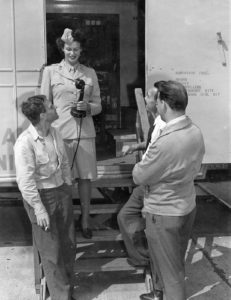
The collection becomes much more substantial in its coverage of World War II, both of those who served in the military and who assisted with the homefront effort. Of the latter group, any serious researcher must contend with the Rosie the Riveter / World War II Home Front oral history project. This project, completed only in the last few years, is OHC’s largest project to date, resulting in hundreds of individual interviews. Along with scores of interviews with those who worked in wartime industries, this project also features a handful of interviews with women who served in the military, such as army recruiter Mary Cohen, who later went on to place veterans in jobs; or served in some auxiliary role, such as Anita Christiansen and Mary Highfill, both of whom volunteered with the USO; or Grahame Crichton Coffey, who joined the Women Accepted for Volunteer Emergency Service (WAVES) in 1943 and continued her service for the duration of the war.
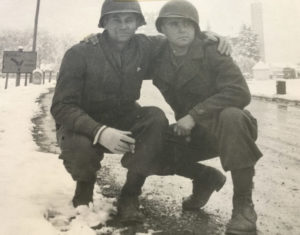
In dozens of additional interviews, men detail their service in the war and bravery in many of the great battles. Walter Newman, for example, provides a harrowing, awe-inspiring account of the Invasion of Normandy in June 1944; around the town of Saint Lo, Newman was shot through the lung and gravely injured, spending many months hospitalized (see the video below). He recuperated fully and went on to work for the welfare of veterans throughout his life and was even honored with the French Legion of Honor medal in 2009. Our recent oral history with UC Berkeley Mechanical Engineering Professor George Leitmann also offers a riveting first-person account of the Battle of Colmar and the liberation of Europe. The fact that both Newman and Leitmann were young Jews fighting the Nazis adds an extra dimension to these dramatic tales.
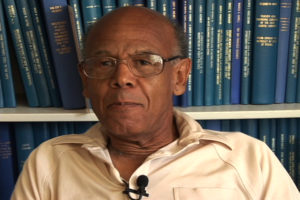
The story of American veterans did not end with World War II, and the OHC collection includes scores of oral histories with those who have served in Korea, Vietnam, and the Gulf War, among other conflicts. Our project documenting the history of the Oakland Army Base includes interviews covering all of these conflicts, but has a special focus on the Korean War and Vietnam War eras, the time at which the base was the largest military port operation in the world. Gordon Coleman, an Oakland native and graduate of UC Berkeley, served in Korea in the immediate wake of the ceasefire. George Bolton, who was interviewed for this project, was raised in Oakland and was drafted into the army in 1963 where he served for two years, including some time in these early years of the Vietnam War. Grant Davis served in the Air Force during the Vietnam War, and then went on to have a civilian career at the Oakland Army Base. All three men speak about their military careers from the perspective of African Americans who experienced integration, and racism, while in the service.
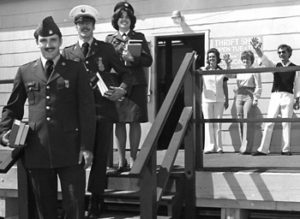
These interviews are just one way — perhaps only one small way — in which the Oral History Center, and by extension UC Berkeley, chooses to honor our veterans and remember their service to our country. Further, we are aware that those whom we had the chance to interview were those who survived the battles, the wars, and the hardships; they returned home, but many others did not. Because they are the ones who lived to tell those stories, we take seriously our role in preserving them for you and future generations to hear.
Martin Meeker
Charles B. Faulhaber Director
Oral History Center, The Bancroft Library
Robert Kendrick: Mine Design, Planning and Supervision from High Mountain to Deep Jungle, 1950s-2000s
I was looking back over my original 2014 proposal for the The Global Mining and Materials Research Project, to which this new Bob Kendrick oral history is the latest addition. There was this passage about the project’s purpose: “to document expertise that can speak to the political, environmental, legal, social, and economic changes that surrounded mining exploration, permitting, production, processing, and remediation over the last thirty years.” This oral history is certainly about all of that, but it is also a life history in the fullest sense. The more proximate impetus for the interviews, as it too often is, was the narrator’s failing health.
In the lead-up to the interview sessions, Bob was concerned that he had not prepared enough, that he might not remember enough, or tell the stories well enough. But he was sure that he wanted to say some very specific things about his life experiences. We worked together with his wife of 65 years, Marian, and their sons Peter and Mike, to assemble material to frame the set of interviews that would be held in a western suburb of Phoenix. Marian and Bob then welcomed me into their home in February of this year for just two days and an afternoon. They had a dining room table covered with boxes of papers, photo albums, and artifacts, such as core samples from a gold mine, the hide of an anaconda and a stuffed piranha. For better or worse, I positioned two of Gary Prazen’s bronze sculptures of miners in the background behind Bob in the interview frame. All around the house were Marian’s paintings depicting beautiful scenes from some of their long sojourns in South America, Central Asia, Siberia, Canada, and all over the United States.
Bob and Marian did work all over the world, but one of the clear messages we get from a life history is the sense of origin, of place. There is a distinct mountain sensibility about this oral history. The place and time where Bob grew up, Leadville, CO in the 1930s and 40s, was a somewhat forbidding place, on a kind of vertical frontier, a sometimes dangerous place. Bob grew up with danger, but I suspect he also grew up with some variety of mountain culture. People did things up there that were difficult, sometimes because they had to, but sometimes precisely because they were difficult. Bob relished physical challenges, which perhaps prepared him for other kinds of challenges later in life.
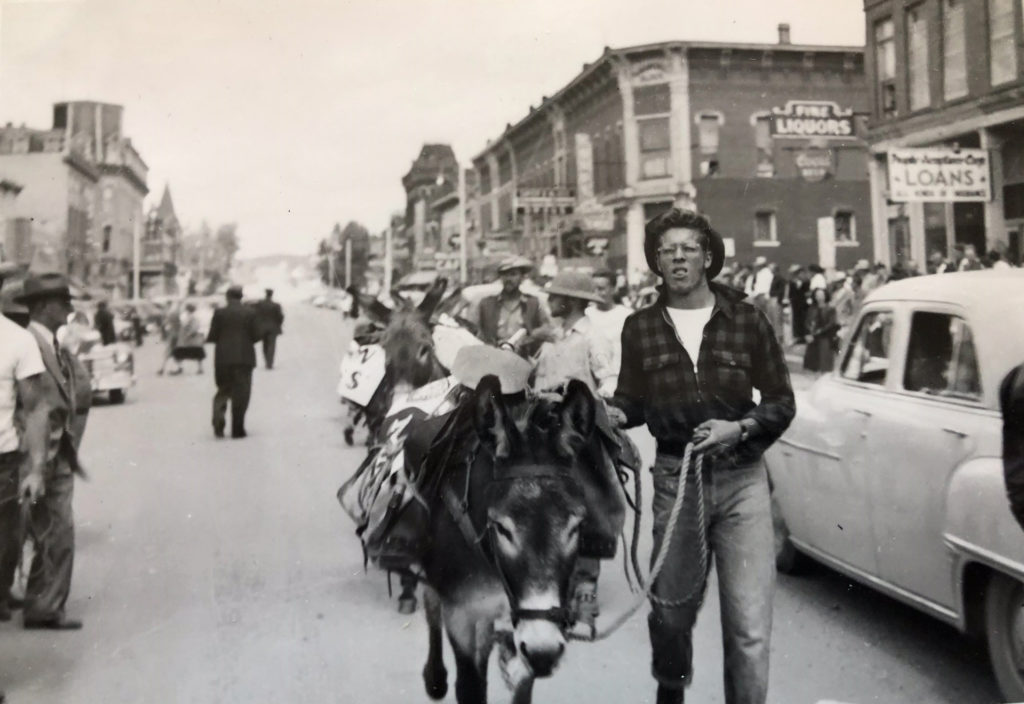
There are parts of this oral history that are raw. There were stories that were difficult for Bob to recount, but that he wanted to tell nevertheless. These days, there is little talk about “character,” so little that I don’t know that we can easily define it anymore. When I heard Bob talk, still with a lot of grief after so many years, about what it’s like to tell a family that their loved one has been killed in the mine of which he was in charge, I thought I might have caught a glimpse. It occurs to me that these interviews were perhaps one more difficult thing he wanted to do. But this oral history is, to paraphrase Bob, also full of good things.
Bob is survived by his wife Marian, and his children Mike, Peter, Melissa, Rob, and Gina.
The Oral History Center wishes to thank the Freeport Foundation and Stanley Dempsey for their support of the Center and for making this oral history possible.
Oral history and the Second Golden Age of Radio?
A long while ago, my colleague Shanna Farrell told our group about one of her pet peeves, the overuse / misuse of the term “oral history” in the media. She is certainly right about the increased use of the term. A cursory search of the mass-media landscape includes some fun stories in Forbes on the week Wayne Gretzky hosted Saturday Night Live, in Billboard on the time Kanye West rushed the stage at the Video Music Awards, and in vulture.com (New York Magazine) on a scene in Christopher Nolan’s The Dark Knight, in which an actor narrowly avoids having a pencil pierce his eyeball.
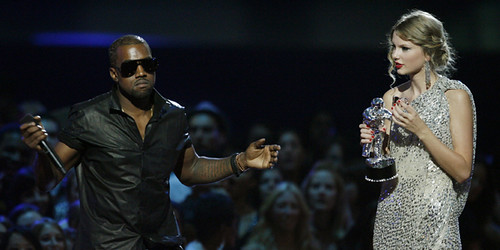
As I was looking at these pieces, it occurred to me that what journalists mean by “oral history” is simply a more extensive use of quotations and a lighter touch with the narrative. But it’s still, of course, journalism. These are “thick descriptions” of a moment in time, not the life histories oral historians usually do.
We in the profession of oral history, however, are at a bit of a messaging disadvantage. After all, mainstream journalism, even in the age of social media, is the ultimate mainline to the public. In fact, journalists still for the most part shape and define what we call “the public.”But do all of these examples constitute a misuse of the term “oral history?” The piece on The Dark Knight, for example, is nothing more than a series of quotations from people interviewed for the article. How different are these from the secondary outputs developed within the field of oral history, such as the Oral History Center’s own podcasts?
There is a real appetite for what oral historians do, and it’s growing. Part of me welcomes this misuse of so-called oral history, as long as we have the opportunity to correct misconceptions about our nuts-and-bolts work, i.e., the co-creation of more in-depth life histories, and to highlight the core fact of our privileging the voice and authority of the narrator over our own.
With our hectic, multitasking lives, punctuated by the forced downtime of gridlocked traffic and monotonous subway rides, we’re living in a strange second Golden Age of Radio. Archival oral history projects have a great shot at reaching these audiences of bored commuters, pensive gardeners, and late-night snugglers if we can broaden our notion of how to package and curate the wonderful materials we’ve helped to make with our narrators.
OHC Director’s Column – September 2019
An oral history of the Zombie War!?
No, UC Berkeley’s Oral History Center isn’t about to undertake an oral history project on humanity’s battles with zombies. But this was the subtitle to the 2006 novel by Max Brooks, World War Z, that was later made into a big-budget movie starring Brad Pitt as, what else, a former UN employee-turned-zombie eradicator. Having experienced both versions, I can say without qualification that the book was far superior to the movie, in part because the book attempted to take the oral history dimension a bit more seriously—while not skimping on fun or sensation. “Oral history” in this case was the novel’s conceit: first person accounts collected in the wake of the war (spoiler alert: the zombies lose), edited and spliced together in an attempt to create a narrative of the madness. But, really, is this “oral history”?
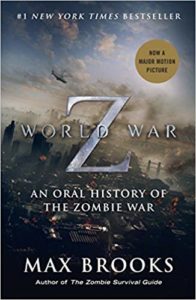
In recent years, “oral history” has moved from academic jargon to pop culture ubiquity. While there have been moments in the past when oral history-like projects have broken through (think Alex Haley’s Roots), only now are we seeing, for example, “An Oral History of the Time Wayne Gretzky Appeared on SNL,” an article which appeared last month in Forbes (of all places!). Surely my colleagues and I are thrilled that oral history appears to be having a moment. Less often do I get that crinkled look on someone’s face when I tell them, “I’m an oral historian.” They’re not as likely to ask, “Does that have something to do with… dentistry?” But. We are not entirely comfortable with what this increase of recognition means. People link “oral history” to any number of cultural products, maybe especially StoryCorps, which is regularly featured on NPR. Like World War Z, however, even StoryCorps is quite different from the way in which professional, university-based oral historians do our work.
Within the oral history community there is on-going conversation about just what elements comprise “best practices.” Yet, there is some baseline agreement as evidenced by the Best Practices document approved by the members of the Oral History Association in 2018. At the Oral History Center, our definition of “oral history” begins with a set of core practices and procedures. These practices set our work apart from anthropologists, most journalists, and, yes, fictional chroniclers of the zombie wars.
Oral history at Berkeley begins with creating a project and determining its size and scope, which might result in fifty interviews or just one. We select the narrators, or interviewees, and ask them to sign a letter of informed consent. This letter details their rights and responsibilities, including the fact that they can withdraw from a project at any point prior to its completion. The interviews are conducted, typically in two-hour sessions, and are recorded on video, unless the narrator wants audio-only. All interviews are transcribed then lightly edited by our staff before being given to narrators for review and approval. We finalize the transcripts, deposit them in The Bancroft Library, and usually make them available to world-at-large through our website. So, for us, “oral history” is defined by three key elements: thorough research and planning; narrator consent at the beginning and approval at the conclusion of the project; and broad accessibility to the finished and approved transcript (and, increasingly, to the original recording as well). Once these bona-fide oral histories have been completed and offered up for use, hungry minds around the world are given the opportunity to create their own interpretive oral history projects on any number of subjects from the banal to the profound, from the tiny to the grandiose—but let’s all hope not on any zombie war past, present, or future.
In this issue of our monthly newsletter, we ponder the question of “what is” and “what is not” oral history. As you’ll notice, we are not doctrinaire, but we do take this question very seriously and think that it is a useful starting point for any conversation about what it is that we do.
Martin Meeker, Charles B. Faulhaber Director of the Oral History Center
New Release Oral History: Jesse Choper on the Constitution, Legal Education, and Horse Races
The Oral History Center is pleased to release our life history interview with Jesse Choper. Jesse Choper is the Earl Warren Professor of Public Law (Emeritus) at the University of California, Berkeley, School of Law, where he also served as dean from 1982 to 1992.
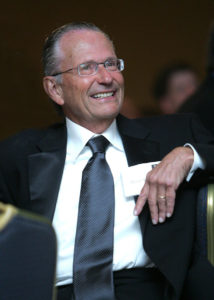 Choper was born in Wilkes-Barre, Pennsylvania, in 1935 to immigrant parents from Lithuania. He was educated at the University of Pennsylvania Law School, and alongside his studies served on the law review and lectured at the Wharton School. Following his graduation in 1960, he served as law clerk to U.S. Supreme Court Chief Justice Earl Warren. He has authored numerous influential books and articles on constitutional law, including the role of the Supreme Court, the religion clauses of the Constitution, the eleventh amendment, as well as casebooks on constitutional and corporate law. This autobiographical oral history covers the full sweep of his life and work as a legal scholar, educator, and administrator. In this interview, Dean Choper talks about his upbringing and evolving relationship to Judaism; his education and teaching experience and philosophy; his clerkship for Chief Justice Warren; the numerous complex issues he faced as faculty and dean of the law school; the issues behind his books and articles on constitutional law, including freedom of religion, the establishment clause, contraception and abortion, individual rights, federalism, and separation of powers; reflections on changes over the past several decades to the Supreme Court, tenure, and approaches to constitutional law; and his role on the California Horse Racing Board.
Choper was born in Wilkes-Barre, Pennsylvania, in 1935 to immigrant parents from Lithuania. He was educated at the University of Pennsylvania Law School, and alongside his studies served on the law review and lectured at the Wharton School. Following his graduation in 1960, he served as law clerk to U.S. Supreme Court Chief Justice Earl Warren. He has authored numerous influential books and articles on constitutional law, including the role of the Supreme Court, the religion clauses of the Constitution, the eleventh amendment, as well as casebooks on constitutional and corporate law. This autobiographical oral history covers the full sweep of his life and work as a legal scholar, educator, and administrator. In this interview, Dean Choper talks about his upbringing and evolving relationship to Judaism; his education and teaching experience and philosophy; his clerkship for Chief Justice Warren; the numerous complex issues he faced as faculty and dean of the law school; the issues behind his books and articles on constitutional law, including freedom of religion, the establishment clause, contraception and abortion, individual rights, federalism, and separation of powers; reflections on changes over the past several decades to the Supreme Court, tenure, and approaches to constitutional law; and his role on the California Horse Racing Board.
The Oral History Center has interviewed Dean Choper on two previous occasions, once for the Law Clerks of Chief Justice Earl Warren project and then again for the Athletics at UC Berkeley project.
Dr. Robert Allen’s Port Chicago and Civil Rights Archive and Oral History Collection
By Julie Musson and Lisa Monhoff
This July marks the 75th Anniversary of the Port Chicago Naval Magazine disaster, a massive explosion that resulted in the largest loss of life on the U.S. mainland during WWII. The explosion happened while African-American sailors were loading a munitions ship in the Suisun Bay. Munitions detonated and two cargo ships exploded killing 320 and injuring 390 sailors and civilians. After the explosion, hundreds of African-American servicemen refused to return to segregated, unfair, and unsafe work conditions and 50 of those sailors held out for better work conditions. In response, the Navy charged the men with mutiny and sentenced them to 15 years of hard labor. The disastrous event at Port Chicago and media coverage of the ensuing mutiny trial was a pivotal moment in the discussions of racial inequality in the U.S. and contributed to desegregation in the Navy beginning in 1946.
In 2016, the Port Chicago Naval Magazine National Memorial under the stewardship of the National Park Service acquired the Dr. Robert Allen Port Chicago and Civil Rights Collection. The collections comprised of 35 linear feet of research archives and 34 hours of oral history interview content produced by Dr. Robert L. Allen as the result of over 40 years of primary research, documentation and scholarly works. The work of Dr. Allen to understand and publicize the disaster and the mistreatment of the sailors culminated in the publication of The Port Chicago Mutiny in 1989 and has continued with decades of appeals for official pardons and exoneration for those charged with mutiny.
The Robert L. Allen papers on Civil Rights consist of correspondence, primary research, writing and teaching materials created by Dr. Allen in his capacity as activist, editor, writer and educator. Dr. Allen’s body of work includes several books written and published about civil rights and labor leaders, including Bay Area activists Lee Brown and C.L. Dellums. He also served as Senior Editor and writer for many years at The Black Scholar, co-founded a small press with Alice Walker called Wild Trees and taught in the Ethnic Studies and African-American Studies programs at the University of California, Berkeley.
In collaboration with the National Park Service, the Bancroft Technical Services processed and digitized the National Park Service’s Dr. Robert Allen Port Chicago papers and the Bancroft’s Robert L. Allen papers on Civil Rights. The Oral History Center digitized and transcribed the Port Chicago Oral History interviews.
Links to the resources are below.
The Bancroft’s Robert L. Allen papers http://www.oac.cdlib.org/findaid/ark:/13030/c8sq966g/
NPS Allen (Dr. Robert) Port Chicago Papers http://www.oac.cdlib.org/findaid/ark:/13030/c8f195h3/
Oral History Center Port Chicago Interviews http://www.lib.berkeley.edu/libraries/bancroft-library/oral-history-center/projects/poch
OHC Director’s Column – July/August 2019
“How can one best teach oral history?” This is the question that OHC staff asks every year in anticipation of our annual Advance Oral History Institute, held the week of August 5th this year. Oral history is many things — a research methodology, a mode of inquiry, a field of study, a way of engaging with people — so how does one approach communicating a viable path toward the completion of successful interviews?
A few generations of practitioners, theorists, and teachers have approached this challenge in any number of ways. Some recommend book study to first learn the issues and questions — the overall discourse of oral history — as the best way to achieve sure-footing; others insist that competence in oral history, being primarily about human exchange, is most easily achieved through practice, learning as you go; and some contend that oral history is nothing more than historical research, so pursue it as one would archival study. The correct answer is probably all of the above, or some dynamic mixture thereof.
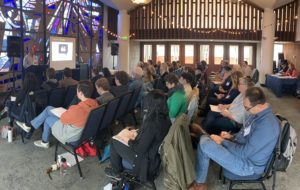 In 2014, after hosting probably ten Institutes, new and veteran OHC staff gathered, led by then-new Institute Director Shanna Farrell, to refashion the program and attempt to come up with an optimal way to ‘teach’ oral history over the 5-day program. Farrell came up with the notion of matching the flow of the week to the life-cycle of the interview: Monday focuses on oral history foundations — concepts, theories, and ethics; Tuesday details approaches to project planning and conceptualization; Wednesday naturally examines the complexities of the interview itself; Thursday we delve into strategies for analysis and interpretation of those interviews; and Friday we bring it together by considering various oral history outputs, such as transcripts, podcasts, and books. Along the way, participants engage with the theoretical and methodological literature of oral history; they have the opportunity to witness a ‘live interview’ and then practice interviews of their own; and in small workshop groups they are invited to consider how oral history research might augment and, potentially, transform their own research projects.
In 2014, after hosting probably ten Institutes, new and veteran OHC staff gathered, led by then-new Institute Director Shanna Farrell, to refashion the program and attempt to come up with an optimal way to ‘teach’ oral history over the 5-day program. Farrell came up with the notion of matching the flow of the week to the life-cycle of the interview: Monday focuses on oral history foundations — concepts, theories, and ethics; Tuesday details approaches to project planning and conceptualization; Wednesday naturally examines the complexities of the interview itself; Thursday we delve into strategies for analysis and interpretation of those interviews; and Friday we bring it together by considering various oral history outputs, such as transcripts, podcasts, and books. Along the way, participants engage with the theoretical and methodological literature of oral history; they have the opportunity to witness a ‘live interview’ and then practice interviews of their own; and in small workshop groups they are invited to consider how oral history research might augment and, potentially, transform their own research projects.
Over the past year or so, in our newsletter we have featured profiles of several Institute ‘graduates’ — individuals who have achieved great things through their own hard work, work that we like to think the Institute has informed and maybe even improved. The plan for this year is to live-tweet parts of the Institute, so please follow us on twitter if you don’t already. And while our 2019 Institute is sold-out, it is not too early to plan for 2020 (dates coming soon!).
Martin Meeker, Charles B. Faulhaber Director
The Berkeley Remix Podcast, Season 4, Episode 2, “Berkeley Lightning: A Public University’s Role in the Rise of Silicon Valley”
“We’re used to hearing about how game-changing technology makes whole new ways of living and working possible. But what makes the game-changing technologies possible? We’re going to talk about Berkeley’s contribution in this domain, a bit upstream from the technology we all know.”
This season of the Berkeley Remix we’re bringing to life stories about our home — UC Berkeley — from our collection of thousands of oral histories. Please join us for our fourth season, Let There Be Light: 150 Years at UC Berkeley, inspired by the University’s motto, Fiat Lux. Our episodes this season explore issues of identity — where we’ve been, who we are now, the powerful impact Berkeley’s identity as a public institution has had on student and academic life, and the intertwined history of campus and community.
The three-episode season explores how housing has been on the front lines of the battle for student welfare throughout the University’s history; how UC Berkeley created a culture of innovation that made game-changing technologies possible; and how political activism on campus was a motivator for the farm-to-table food scene in the city of Berkeley. All episodes include audio from interviews from the Oral History Center of The Bancroft Library.
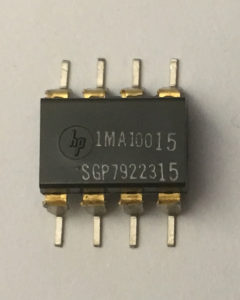
Episode 2, “Berkeley Lightning: A Public University’s Role in the Rise of Silicon Valley,” is about the contributions of UC Berkeley Engineering to the rise of the semiconductor industry in what became known as Silicon Valley in the 1960s and 70s. In contrast to the influential entrepreneurial spirit of a private university like Stanford, Berkeley’s status as a public institution had a different impact on Silicon Valley. We focus on the development of the first widely used design program for prototyping microchips. Originally designed by and for students, the software spread like lightning in part because Berkeley, as a public institution, made it available free of charge. The world has not been the same since.
This episode uses audio from the Oral History Center of The Bancroft Library, including interviews with Paul R. Gray, Professor of Engineering Emeritus, Department of Electrical Engineering and Computer Science and Dr. Laurence Nagel, CEO of Omega Enterprises, former senior manager at Bell Laboratories, with a PhD from UC Berkeley EECS (oral history forthcoming).
“Berkeley Lightning” was produced, written, narrated, and edited by Oral History Center historian Paul Burnett.
The following is a written version of the The Berkeley Remix Podcast Season 4, Episode 2, “Berkeley Lightning: A Public University’s Role in the Rise of Silicon Valley. ”
Narration: Silicon Valley. It’s a real place, the valley roughly encompassed by Santa Clara County at the southern end of San Francisco Bay. But it’s also a mythic place, with just the right combination of top universities, electronics firms, defense dollars, and a concentration of rare, plucky college-dropout geniuses who would go on to hatch world-changing technologies in suburban garages.
We want to take that apart a bit. The university that looms largest in nearly every story of the rise of Silicon Valley is near the heart of that actual valley, Stanford University. But about 30 miles north, on the eastern edge of the Bay, lies the University of California, Berkeley, a longstanding rival to Stanford, if football is your game.
Our story here focuses on this other university, a public, state university, that established institutions and teams to develop innovations that would make the culture of innovation possible. There are many different stories we could tell about Berkeley’s role in the rise of Silicon Valley, from specific technologies such as flash memory to digital-to-analog conversion, aka the hardware and software that make it possible for you to listen to me right now.
We’re used to hearing about how game-changing technology makes whole new ways of living and working possible. But what makes the game-changing technologies possible? We’re going to talk about Berkeley’s contribution in this domain, a bit upstream from the technology we all know.
The centerpiece of just about any discussion of Silicon Valley is the development of its namesake, the silicon microchip, a tiny wafer packed with an ever-growing number of all the components that make up an electronic circuit in this microscopic space, what comes to be called an integrated circuit. Chief among these components is the transistor. Transistors do many things, but among them is to act as a switch, which allows them to process digital information, zeros or ones, much more efficiently and cheaply than tube-based mainframe computers, the ones that used to fill up entire basements of office buildings. When the transistor was invented, the race was on to increase the density and number of transistors. There are a few reasons why you want to make these integrated circuits smaller and denser. For one thing, they work better and more efficiently. And, you can cram them into small spaces, such as at the tip of a missile, for example.
But imagine how tricky they are to make. Here is Berkeley engineering professor Paul Gray explaining the dimensions of the microchip.
Gray: It was probably maybe fifty mils by a hundred mils. A mil is a thousandth of an inch. So that would be a tenth of an inch in one dimension and one-twentieth of an inch in the other dimension.
Narration: And here is Larry Nagel, who was a student at Berkeley’s microelectronics lab in the 1960s, on making chip prototypes.
Nagel: And being a little bit clumsy we had to make up for a couple of times when things got dropped and things got otherwise messed up. So I guess I was probably working maybe probably four weeks at that before I had a chip that actually worked.
Narration: Now this was not normal, routine work for an electrical engineering student in the 1960s. Just a handful of universities that had links the electronics industry and to military research had founded specialized microelectronics labs by the early 1960s. Here’s Dr. Gray again:
Gray: Berkeley had started the country’s first laboratory in which you could fabricate an integrated circuit. And that was in the about ’63, ’64 timeframe…Don Pederson was the faculty member here who really spearheaded the establishment of that laboratory. In that era Stanford and MIT also were starting labs—I think Berkeley was the first and then Stanford and MIT, some a year or two or three later, also got on the same track. … Berkeley and Stanford and MIT continued for the next several decades as the main institutions with this fabrication capability. And we still have a big lab, fabrication facility over there in the CITRIS Building.
Narration: So, UC Berkeley was the first university in the country to have a microchip fabrication facility. But that’s just the beginning. You have to understand that making microchips, by hand, is hard, really hard, and time-consuming.
Nagel: Well, just to build the circuit alone would probably take a couple of days for a hundred transistors for a kit. Maybe for a twenty transistor circuit a day. So one or two days, something of that order of magnitude. But actually measuring and getting the thing to work right, debugging it, could take a good deal longer than that. That could take weeks.
Narration: But from the time the microelectronics lab was founded until the end of the 1960s, the number of transistors on the same space on a chip went way up.
Gray: We were building chips that had on the order of a hundred transistors on them. It’s very difficult to predict by building a physical breadboard or a prototype out of discrete components how a chip like that’s going to behave electrically. You really needed circuit simulation even at that point, a program that would simulate the electrical behavior of a circuit.
Narration: Now if a computer program could do the work of prototyping a circuit, you wouldn’t have to waste time building dud after dud. As a student at the University of Arizona, Paul Gray then learned about the work at Berkeley from his mentor, David Holland. And when Gray went off to work down in the valley at Fairchild Semiconductor, right around the time that Gordon Moore and others split off to found Intel, he recognized the importance of the work that Berkeley researchers were doing.
Gray: I do remember having a lot of connections with universities in general, Berkeley and Stanford, on various topics in those years. Of course, we were in an industrial park created by Fred Terman, owned by Stanford. We were on their land. But I don’t remember having a sense of a Stanford dominance of the landscape in terms of university engagements. We had a lot of interaction with the Berkeley people because of the computer-aided design activity. Don and his group here at Berkeley were developing that kind of simulator. We needed that. So we got a connection going and we got one of the early versions of SPICE, I think it was called something else at that point, and used that.
Burnett: CANCER, I think.
Gray: Yes, correct.
Narration: SPICE? CANCER? These are strange if cool names for software, but this will be explained later. As a result of his reaching out to Berkeley to get a hold of this computer program called CANCER, Paul Gray was invited to Berkeley to teach for a year, and then joined the faculty, where he got the back story on what this software was all about.
First of all, Berkeley engineering was structured for this interaction between computing and electronics. At the time, only Berkeley and MIT had electrical engineering and computer science in the same department. Second, there was a leading light of the Electrical Engineering Department named Donald Pederson, who made computer-aided design a priority.
Gray: Somewhere in the early sixties, Don had recognized this need for computer simulation. … back in those days you could still try out your design by building what they called a breadboard and you plugged discrete devices in and it mimicked the chip, how the chip was going to behave. That was pretty ineffective anyway. But once you got bigger than a hundred transistors or so it became completely impossible to do that. Don recognized very early, the way things were going, it was going to be essential. And it was one of those early interdisciplinary things. To build an effective simulator of electronic circuits you have to have someone that knows devices and models the behavior of the transistors electrically. You have to have somebody that understands computer numerical analysis and how you actually solve differential equations on a computer on a large scale. And you have to have circuit people who understand what’s needed.
Narration: The other piece of the story is the fact that UC Berkeley is an institution of higher education, and students need to be taught in an efficient manner. So Don Pederson asked Ron Rohrer to develop a graduate course where the challenge was to have the students build design software. Here’s Dr. Nagel again:
Nagel: But I would say actually the major emphasis of the simulation programs that were developed at Berkeley were more as teaching tools, so that students could actually get a first-hand—again, Don was an intuitive guy. By running circuits on a computer you could get an intuitive feel for how the circuit would work, something that would take hours and hours and hours if you were to do it in the lab. Because in one night you could build five different variations of some particular circuit, simulate it, and have your results of which variation worked the best. That would be hours and maybe days of laboratory work. By doing it on a computer the entire class—it was no longer just a graduate exercise. Undergraduates could also enjoy this thing.
Narration: But the first graduate class to get this program built was intense, to say the least.
Nagel: And, of course, Ron [Rohrer] came in the first day and said, “Well, for those of you who think this is going to be a course on circuit synthesis, you’re in for a shock because this is going to be a course on circuit simulation and you guys are going to learn all about circuit simulation by writing a circuit simulator. The judge for how well you do will be Don Pederson. If he likes the program that you write, you’ll all get As. If he doesn’t like the program you write, you’ll all fail.” Ron was a very brash guy. So immediately half the class turned white as a sheet and left the room and were gone. [laughter]
Narration: Building on a number of earlier versions, Larry Nagel’s CANCER program was the result of that class, [computer analysis of non-linear circuits, excluding radiation]. Here’s Larry Nagel explaining the significance:
Nagel: “CANCER: Computer Analysis on Non–Linear Circuits…Excluding Radiation!” Because we were very proud of the fact that we’d developed this program with no money from the government at a time when the government was heavily funding research into radiation effects on circuits…
[background audio of student protests, chanting]
…because we were at the time very much worried about some kind of a nuclear event disabling our missiles. … So that’s how we got the “excluding radiation,” because we weren’t doing radiation. We were Berkeley at the time, right? This was Berkeley. This was not MIT. This was Berkeley. So that’s how CANCER got started.
Narration: So, you had institutional innovations, a microelectronics lab and a teaching approach that focused on computer-aided circuit design, resulting in this technical innovation. But a crucial innovation was not technical at all; it was legal, and social. Larry Nagel’s SPICE, or Simulation Program with Integrated Circuit Emphasis, was central to this part of the story, as was UC Berkeley’s status as a public university:
Nagel: I like to think that SPICE was actually the first open-source project way back before there was such a thing as open-source. But Don Pederson had a very strong belief that anything that was developed at a public institution should be in the public domain. So all of the Berkeley programs were available free of charge, or basically for whatever it cost to load the program onto a tape. So the fact that this program was for free had an enormous impact in a lot of ways. First of all, the program was made available to anybody so it diffused very quickly out to various different universities. And all the students that learned to use SPICE took it with them to industry. So it wasn’t at all long after the original release of SPICE in 1971 that basically every major integrated circuit manufacturer had their own version of SPICE. There was a TI SPICE at Texas Instruments. There was an ADI SPICE at Analogue Devices. After I graduated there was a program called ADVICE, which was developed at Bell Laboratories and used at Bell Laboratories. …
Don’s deal was that you can have the program for free but if you find a bug in it and fix it you have to give it back to us. You have to tell us what the bug is and how you fixed it. There were several generations of students that kept improving SPICE. SPICE improved because you had this entire base of industry feeding information back.
Nagel: I think for Don it was really a matter of principle. He didn’t do a cost-benefit analysis. He just said, “This is how it has to be. We’re a public institution. We have to make it publicly available.” But if you look in hindsight, the reason that the program became as widely accepted as it did was largely because it was freely available to everyone. Anybody could walk out of Cory Hall with a tape and they had their version of SPICE. That process went on for a long time. I think the last version of SPICE that was released was SPICE III and that was in 1980s. So we’re talking about Berkeley being pretty much a SPICE factory for fifteen, maybe even twenty years.
Narration: Here’s Paul Gray again:
Gray: Long story short, within ten or fifteen years of that point in time, every circuit design engineer in the world was using some flavor of a derivative of SPICE. It became an industry standard. The industry wouldn’t really exist without that kind of simulation capability. Once you get [the scale] to the thousands and tens of thousands and hundreds of thousands of transistors, it’s the only way you can do design. … So it was a huge innovation and had an incredible impact and also pioneered a great software dissemination model for universities. Many others emulated that public domain model of dissemination. … It has been a big part of the landscape here at Berkeley for many years.
Narration: And so, is the Silicon Valley phenomenon really just about Stanford, chip companies in the Valley, and amateur hobbyists?
Gray:
If you asked the random citizen on the street anywhere in the Bay Area they would probably say that Stanford was way more important than Berkeley. I think “way more important” is not correct. … judging by the number of companies started by faculty or former students, or by the numbers of alumni employed in the valley, one could argue that Berkeley and Stanford are comparable contributors. In terms of innovations that have mattered, there are many.
Narration: So, what does this mean? The development of computer-aided design greatly facilitated experimental research in the design of new microchips. But there is something even more fundamental going on here. First, easy availability of quasi-open source software encouraged commercial development of new chip designs without making it prohibitively expensive to do so through proprietary licensing, copyright, and other legal devices. But Berkeley’s model still allowed companies to make a version of the software they could own.
UC Berkeley deliberately went down a different road, as a direct consequence of its hard-wiring as a public university. The second pivot point here is the separation of design from manufacturing. This software, and all its descendants, allowed companies to focus on the more-profitable end of microchip design, and to outsource the much-more-expensive part of the process, manufacturing, to other companies, and, eventually, to other countries. Now there are consequences to this change, environmental, socioeconomics and otherwise that we can’t cover here. But suffice it to say that in 2015, there were just a handful of major semiconductor fabrication facilities in the United States, with exports totaling $40 billion. Compare that to the fab-less semiconductor design companies, many of which are located in Silicon Valley: total exports $166 billion.
This is just one example of the influence that UC Berkeley’s Department of Electrical Engineering and Computer Science has had on the size, character, and global leadership of Silicon Valley. It was a combination of social, legal, and technical innovation that struck the Valley with lightning force, and in turn accelerated change and growth in the semiconductor industry to this very day. For more about these stories, visit the Oral History Center website at ucblib.link/OHC and search across our entire collection or through the full interviews with Paul Gray and Laurence Nagel.



